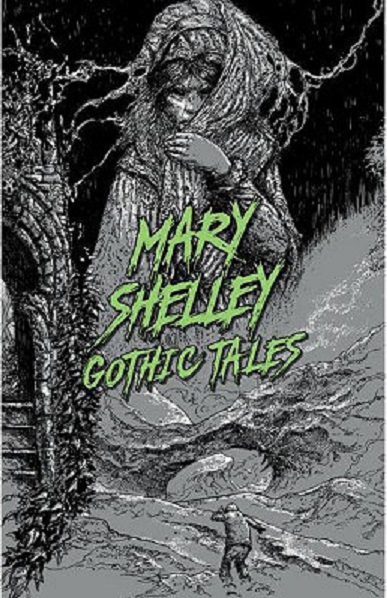Book Review: Mary Shelley: Gothic Tales by Mary Wollstonecraft Shelley
The author of the classic horror novel Frankenstein, or, The Modern Prometheus also wrote other things. This chapbook from Union Square & Co. reprints one of her short stories and an essay she wrote.

“The Mortal Immortal” is a memoir by a fictional student of Cornelius Agrippa, Winzy. While Heinrich Cornelius Agrippa was a historical person, this story riffs on a legend about one of the famous alchymist’s scholars trying to raise a foul spirit solo and getting killed in the process. In this version, the other apprentices abandoned their master in fear, and Winzy had planned to do likewise.
But Winzy was a poverty-stricken youth in love with the beautiful Bertha, who’d been adopted by their village’s richest widow and was being groomed for marriage to whichever upper crust fellow most impressed that woman. Bertha also had some affection for Winzy, but his poverty and lack of prospects caused her to push him away. Strapped for cash, he goes back to Cornelius Agrippa.
During a particularly rough patch with his sweetheart, Winzy is helping Cornelius Agrippa create a potion that the alchemist describes as “a cure for love.” Cornelius takes a nap during a crucial stage of the cooking, leaving Winzy in charge of watching. Winzy gets distracted, and when the potion smells good decides to try this “cure.” He swigs about half of it, then realizes what he’s done and drops the bottle, smashing it. The alchemist assumes that the potion exploded on its own and Winzy lets him think that.
Instead of curing Winzy’s affection for Bertha, the potion causes it to grow and fill Winzy with confidence and energy. Impressed with his improvement, Bertha abandons her potential inheritance to marry her childhood sweetie. They’re very happy together for a while.
A few years later, Cornelius Agrippa dies while trying to recreate the formula, letting slip that it was only a “cure for love” in the loosest sense. As an immortality elixir it was meant to be a cure for every ill. Winzy is now faced with more or less eternal youth while his wife grows ever older, crabbier and more decrepit.
Three centuries later, Winzy has found a gray hair. Does this mean he’s aging after all? He’s not willing to wait around to find out. He’s found a goal that will either kill him or make him famous. And there’s something even more drastic to follow.
Without the love of his life, immortality becomes hollow for Winzy. As a subplot, we learn how his eternal youth causes problems with being able to live in society. This could easily have become a novel or a series if Mrs. Shelley had wanted, but it works okay with skipping the many intervening years.
“On Ghosts” is an essay on the idea of restless spirits of the dead. Mary points out that modern (early 19th Century) society had largely discarded the monsters and mysteries of the past as civilization and technology made the world tame. But the notion of ghosts persisted.
She herself had only seen a ghost in a dream, but recounts two of her theoretically truthful friends’ accounts. One had lost a lover, and often saw her appear at night to stroke his cheek while he was drowsing, until he moved and she stopped appearing. Another had a friend commit suicide (with his gun and ammunition that he’d loaned the man!) and saw his bloody shade in a hedged lane twice. Neither had hard evidence, naturally.
The essay concludes with a somewhat less likely anecdote about the king of the cats, which Mrs. Shelley points out is probably fake, but amusing.
This is pretty mild stuff, but a good reminder that the “modern era” has been going on for much longer than most folks would credit.
If you’ve never read anything of Mary Shelley’s work but Frankenstein, this chapbook might be a good place to start, but you can also find much of it at Project Gutenberg in less stylish dress. This would, however, make a nice gift for a gothic literature fan; the packaging is deliberately designed to be a present.

